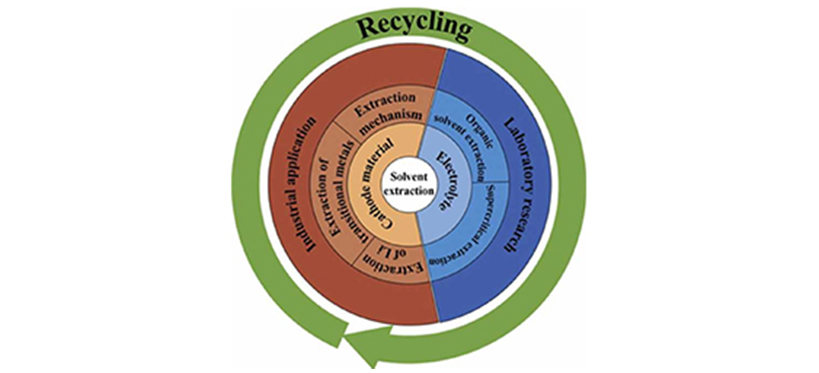
Battery Waste Recycle
Lithium-ion batteries (LIBs), due to their high specific capacity and good cycle performance, has been widely used in electronic products, electric vehicles, artificial satellites and aerospace The lifetime of LIBs is about 3–5 years and a large number of LIBs are retired after reaching the end of their useful life. It is reported that the global recycling market had reached 111,783 tons in 2018 and is expected to reach 641,595 tons in 2025. Many valuable metals, such as Li, Co, Ni, Mn, Fe and Al, etc, contain in these spent LIBs. It has been proved that the content of valuable components in spent LIBs is much higher than the grade of ore, which is of great value for recycling. In addition, the spent LIBs are flammable and explosive, many harmful substances, such as organic solvent electrolyte (easily volatilized and decomposed into harmful gas) and heavy metals (Co, Mn, and Ni, which can seriously damage soil and groundwater) are potential threat to the environment. Therefore, effectively recycling spent LIBs can avoid the waste of resources and reduce environmental pollution.
Among various approaches for recovering valuable components from spent LIBs, solvent extraction has been considered as one of the most popular method due to its high recovery efficiency, excellent effect on element separation, mild experimental conditions and simple operation.
The method of solvent extraction has excellent adjustability, which can control the composition of the target products and obtain relatively pure materials. Traditional solvent extraction is aqueous solvent extraction. The extraction reaction occurs at the interface of two phases of aqueous and organic phase when mixing the organic solvent and aqueous. It uses organic agent that are immiscible with aqueous to selectively extract target components from aqueous solutions. The target components in the aqueous interacts with the molecules of organic agent to form complexes and transfers from aqueous to organic phase. Another form of solvent extraction, non-aqueous phase extraction, should also be noted. This extraction method extracts metal ions from the leaching liquor (a water content < 50 vol%) with deep eutectic solvent (DES) as leaching agent.
Solvent extraction for recycling metals from leaching liquor of cathode material
Solvent extraction is a process in which the molecule of extractant competes with water for metal ions, thereby metal ions change from hydrophilic to hydrophobic. Since metal ions migrate between the water phase and the oil phase and react at the interface, the entire extraction process is complicated. For the extraction of valuable components from the leaching liquor of spent cathode materials, the difficulty will be further increased. This is because the properties of Ni, Co and
Solvent extraction for recycling electrolyte
The electrolyte contains organic solvents (such as ethylene carbonate [EC], propylene carbonate [PC], and dimethyl carbonate [DMC]), lithium salt, and additive. In the process of recycling spent LIBs, the electrolyte is prone to the decomposition, volatilization and generation of harmful gas. Especially in the process of recycling electrolyte by thermal treatment, the decomposition of electrolyte is more serious, a device for collecting gas is needed